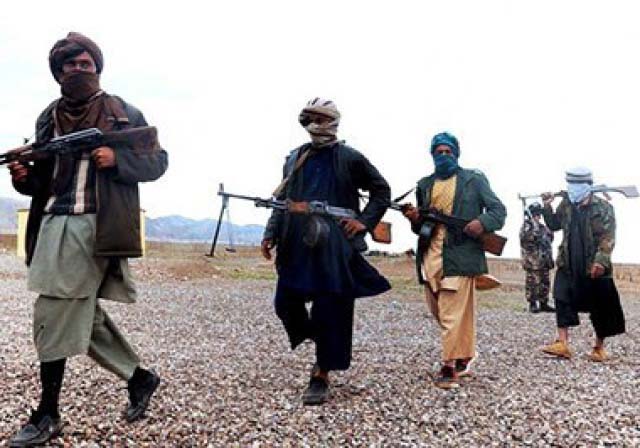The Taliban movement grew from the Afghan orphans or refugee children who attended madrasahs. Their rapid rise to power in 1994 must be seen in the context of chaos and civil war in Afghanistan, with irresponsible armed groups running amok and complete breakdown of law and order. The small band of Taliban was first led by Mullah Omar against a local warlord in Spin-Boldak and led to the capture of Kandahar in November 1994, with scarcely a shot being fired. The subsequent rise and spread of the Taliban in Afghanistan surprised most observers, and was generally welcomed by a war weary and destitute population.
To the development agencies, the Taliban government brought some respite from incessant conflict. However, their tribal and medieval interpretation of religious tenets led to the imposition of draconian policies restricting the rights of women and ethnic minorities. Their edicts on female education, dress code, and employment were largely based on an extremely orthodox ideology, and a source of great distress to many in the Islamic world. In an ironic twist of fate, the Taliban era also saw Afghanistan suffer from one of the worst droughts of this century, which virtually wiped out many sectors of a largely agrarian economy. Despite plentiful evidence of the impact of economic sanctions on the most vulnerable in society, especially children, Afghanistan was progressively deprived of assistance to the extent that even humanitarian agencies found it difficult to operate.
Notwithstanding the hardship due to drought and sanctions, the Taliban policies brought disproportionate suffering and impoverishment to war widows and families in Afghanistan. Food shortages and malnutrition had their biggest impact on Afghan female children. Less obvious are the psychological trauma and mental stress experienced by Afghan women and children and the impact of continued illegal employment of child soldiers by all warring factions.
The lasting impact of war on the psychological state of women and children is well described. Many have post-traumatic stress as a consequence of witnessing or experiencing parental loss in war. Political repression and state terror have also been shown to result in significant psychological sequelae.
The invasion of Afghanistan was intended to target terrorist mastermind Osama bin Laden’s al-Qaeda organization, which was based in the country, as well as the extreme fundamentalist Taliban government that had ruled most of the country since 1996 and supported and protected al-Qaeda leadership. The Taliban, which had imposed its extremist ideology on the entire country, also perpetrated countless human rights abuses against its people, especially women. During their rule, large numbers of Afghans lived in utter poverty, and as many as 4 million Afghans are thought to have suffered from starvation.
The US military forces toppled the Taliban government and disrupted bin Laden’s Al-Qaeda network. On May 2, 2011, bin Laden was shot and killed by United States Armed Forces in Pakistan. The Taliban leadership survives in hiding throughout Afghanistan, largely in the southeast, and continues to launch guerrilla attacks against foreign forces and Afghan soldiers and civilians.
Even as Afghanistan began to take the first steps toward democracy, Taliban forces began to regroup in the mountainous border region between Afghanistan and Pakistan. They continue to engage U.S. and Afghan troops in guerilla-style warfare and have also been responsible for the deaths of government officials and aid workers and the kidnapping of ordinary people and ethnic minority groups. Hundreds of American and coalition soldiers and thousands of Afghans have been killed and wounded in the fighting. Afghans continue to make up the largest refugee population in the world. According to the United Nations’ refugee agency, UNHCR, more than 40,000 Afghans have sought asylum in Europe from January until August this year.
“Until last year, Afghans were the largest global refugee population at 2.6 million people – almost 10 percent of the country’s entire population. Today, estimated at 12 percent, they are ranked as the second largest group (after Syrians) to have reached European shores and borders.”
A landmark survey conducted by UNICEF, few years ago, on the effect of war on children aged 8-18 years in Kabul indicated that 41% had lost one or more parents because of the conflict, and over half had witnessed torture or violent death. Over 90% of the children interviewed expressed the fear of dying in the conflict. A particularly gruesome practice of encouraging children to witness public amputations and executions has an enormous impact on impressionable minds. Over 80% of the children interviewed felt they could not cope with events and that life was not worth living. While such events can lead to considerable psychological trauma and distress, they may also inure a young mind to violence. The Taliban are a product of the same cycle of violence and social upheaval experienced from early childhood. Ignorance, isolation, and a daily ritual of violence greatly temper their vision of the world.
It is stated in the Declaration of Independence as, “All men are created equal … and are endowed by their creator with certain inalienable rights that among these are life, liberty and the pursuit of happiness. That to secure these rights, Governments are instituted among Men, deriving their just powers from the consent of the governed ….” Indeed, it is the government to create a society void of violence and bloodshed and secure the life, liberty and property of the citizens. The government has to plan effective strategy to eradicate terrorism and militancy from the country and free people from the persisting challenges.

